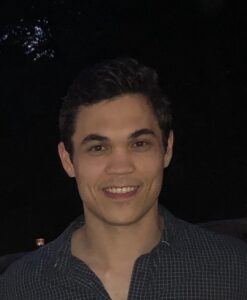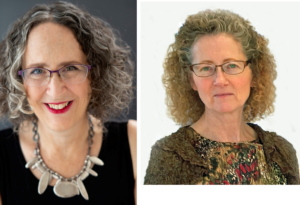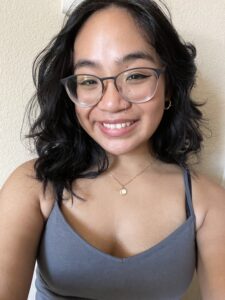On Reality, Fiction and Neurodiversity: How a Fifty-Year-Old Literary Theory Gave Me Permission To Break Every Rule in the Fiction Writer’s Handbook
by Victoria Costello
February 10, 2023
Know your genre, new authors are constantly told. A corollary aimed at new fiction writers goes publishing is impossible… give your book a slim chance by sticking with one genre.
It’s good advice if you can follow it. This I discovered when I began querying my debut novel, Orchid Child, which blends no fewer than five genres to explore the intersection of Celtic folklore and neurodiversity over three generations in one tragedy-plagued, Irish American family—a family not unlike my own. In this essay, I share how I resolved the issue of genre with the help of a fifty-year-old work of critical theory.
As a journalist and documentary producer with an Emmy Award, four popular science books, and a published memoir behind me, I wasn’t a newbie to publishing. Still, most of the decade it took to write and place Orchid Child I spent searching for of the right structure, aka genre, to contain the story I felt compelled to tell. In an early draft, I killed off my main character—Kate, a neuroscientist—on page seven, and had her narrate a series of encounters with her ancestors from a waystation in heaven. In another, I gave major story-telling duties to Kate’s voice-hearing nephew, Teague, and wrote it as Harry Potter meets The Curious Incident of the Dog in the Night-time. Attempting straight historical fiction, I braided Teague and Kate’s journey to their ancestral home in West Ireland with the exile of a grandmother sailing in the opposite direction eighty years earlier. With each attempt at a single genre, it felt like a vital piece of my story went missing. It turns out there could be no Orchid Child without equal bits of history, science, mystery and romance along with a Greek chorus of ancestral spirits and faeries, and at least one Druid.
Genre rules exist for good reasons. Traditionally they mirror specific shelves in physical bookstores. They also form the bases of social contracts with readers who recognize the tropes of their favorite genre as a set of codes that guide their book purchases—on and offline. With these rules in place, readers are (theoretically) assured that the incidents described in a memoir really happened while the characters and events in a novel flow from the author’s imagination. Mystery readers can safely assume that the fate of the dead body or missing person who appears on page one will be explained with a nifty twist by book’s end. Just like fans of fantasy understand that wizards and dragons live in wholly constructed worlds and readers of romance know the two paramours who meet cute in chapter one will overcome the great obstacle tearing them apart to reunite and live happily ever after.
With its kitchen sink of genres intact, Orchid Child found a home with Between the Lines Publishing, a small traditional press that will release it in June of 2023. As I’ve prepared to engage with readers about my novel, I’ve been searching for tidy answers to two questions I would be largely spared if I’d stuck to one genre: What kind of story is Orchid Child? And, why did I have to write it this way?
I turned for help to an old ally, Tzvetan Todorov, who, as it happens, answered both questions for authors writing books like mine in The Fantastic, A Structural Approach to a Literary Genre, published in 1973. Todorov’s work has been on my shelf since 2018 when novelist and workshop leader Joanna Scott recommended it to me after she read the ‘scientist in heaven’ version of my novel. In her feedback, Joanna pointed to an inconsistency about the nature of reality in my draft. Did I want readers to buy into Kate’s heavenly journey as real? Was I privileging her medicalization of her nephew’s voices and visions? Or did I endorse Teague’s perceptions as an acceptable, even preferable worldview? Todorov gave me permission to decisively not decide; that is, to not privilege one of their points of view over the other.
The concepts and terminology he introduced in The Fantastic contain useful nuances that situate novels on a spectrum charting the relative degree of reality present in the worlds their characters inhabit. He borrowed from Freud to describe a work of essentially realist fiction as uncanny when a character experiences a strange event—a ghost, vision, or an unsettling coincidence—that is, eventually, explained away with a mundane cause. Typical causes include a simple coincidence, a character’s dream state or a temporary bout of madness.
Todorov applied the term marvelous to fiction when a strange event can only be explained by the presence of a supernatural or similarly unknown cause. Most of what we now call sci-fi and fantasy fits neatly in this category. According to Todorov, in both uncanny and marvelous fiction, the author explicitly or implicitly settles any lingering doubt about what is real.
But Todorov didn’t stop there. When an author purposely leaves the nature of reality in a novel unsettled, he suggested a new genre was required; one necessary for fiction to reflect the ever-increasing anxiety of Twentieth Century modernity. He called this genre the fantastic, defined as an unstable borderland between the uncanny and the marvelous. His favorite example was Henry James’ 1893 novella, Turn of the Screw, in which the author famously left unanswered the central question of whether a ghost was tormenting the governess—or not.
According to Todorov:
“The fantastic lasts only as long as a certain hesitation: a hesitation common to reader and character, who must decide whether or not what they perceive derives from ‘reality’ as it exists in the common opinion. […] If he decides that the laws of reality remain intact and permit an explanation of the phenomena described, we say that the work belongs to another genre: the uncanny. If, on the contrary, he decides that new laws of nature must be entertained to account for the phenomena, we enter the genre of the marvelous.”
Here, in Orchid Child, sixteen-year-old Teague grapples with the fantastic.
Teague stops running and grabs the trash bin. There’s nobody in the square but him and an old man reading the paper on a bench. But the voices are almost as loud as they were back at the rock wall. A man says… Bloody hell, I’m hit. Fire… help me, a lady yells. He goes back over what the drug store guy told him. How the British wiped out a column of rebels hiding in the church before they burned down Main Street. But that was eighty years ago. His arms and legs vibrate as the pieces fall into place like a frozen cartoon. What if the rocks in the wall held on to what happened here the same way silicon chips store data? Silicon comes from quartz crystals and, duh, quartz is a rock. That must be it. The sounds stay around as a possibility, waiting for somebody to tune in at the right frequency. It could be a quantum thing. Like the ones who suffered back then still want witnesses to what happened. Or maybe he’s just thinking crazy shit. He’s still sorting it out when the church bell peals three times and drowns out the voices. Damn. He’s late for therapy.
Kate, in turn, finds her worldview tested by events which don’t align with the laws of science.
What exactly are these spectral things Teague sees and hears? Kate can’t help but run it through the filter of her training. From what part of his brain do they come? Unless . . . they originate in some other, immaterial source. Or a different time? She shudders at the distance she’s allowed her thinking to drift from known knowns.
There are only a few ways to resolve the central conflict between a protagonist and an antagonist in a fictional narrative. The novel can leave its main character happy, unhappy or somewhere in between. When an antagonist is the character’s internal state, one that society deems an illness, the authorial choice about how their conflict is resolved takes on a moral dimension, along with additional levels of complexity. It is this complexity that ultimately determined how I told Kate and Teague’s story.
In the parlance of current psychiatry, an orchid child is a youngster who inherits an unlucky genetic hand but, somehow, through chance, grit, or careful parenting, converts that deficit into the seed of later success, even brilliance. Other recent epigenetic research demonstrates causal relationships between environmental causes like war and famine and intergeneration trauma that shows up as an inherited mental illness. I wanted a non-didactic way to give readers a deeper, more fluid understanding of these issues, one that seemed best served by centering Kate and Teague’s story in the fantastic.
The fluidity I was going for in my novel is mirrored in the term neurodiversity, which refers to mental differences offering an individual challenges, often social in nature, and advantages, such as enhanced perceptions. In the ancient Celtic world from which my ancestors came, the inherited ability known as second sight, correctly associated with Druidism, a pagan spiritual tradition still practiced in certain parts of Ireland, described extraordinary perceptual abilities, including foretelling and divination. The cultural and scientific paradigm shift occurring today asks us to view the neurodiverse as individuals, not as a group holding a particular diagnosis or exhibiting certain symptoms. As an author with lifelong major depression and as the mother of a neurodiverse son, I felt compelled to tell this story in all its complexity, even if I had to break a bunch of rules to do it.
Every author today, regardless of the size of their publisher, is expected to do the lion’s share of the work of finding readers for their books. As I tiptoed into this sprawling, mostly virtual, marketplace, I made a surprising discovery. For all the evil things Amazon has done to booksellers, its algorithms have given rise to a plethora of genre-busting categories used on their site—with implications beyond. Take the label, metaphysical and visionary fiction, which Amazon affixed to Eowyn Ivy’s magical debut, The Snow Child, a work of historical fiction about a probably imaginary girl whose appearance outside the Alaskan cabin of a hardscrabble, childless couple changes their lives for the better. A decade after its release, Ruth Ozeki’s A Tale for the Time Being maintains a high sales ranking in the category of psychological literary fiction. As both titles are comparable to Orchid Child, I plan to borrow these labels when the time comes to buy Amazon ads—an effective, relatively low-cost sales tactic many authors are adopting to sell their books.
But if there’s any lesson I’ve learned from the experience of writing my debut novel, it is to take more time and effort at the start of my next book project to define the most conducive genre(s) for the story I want to tell. If you’re a writer struggling to find a container for your work in progress, my suggestion is to refresh your knowledge, or become newly acquainted with, the literary theories governing the genres closest to what you’re writing. Of one thing you can be certain: you’re not the first writer to face this conundrum.
If you’re a reader considering going beyond your usual genre(s), consider the untold riches you will find there.






